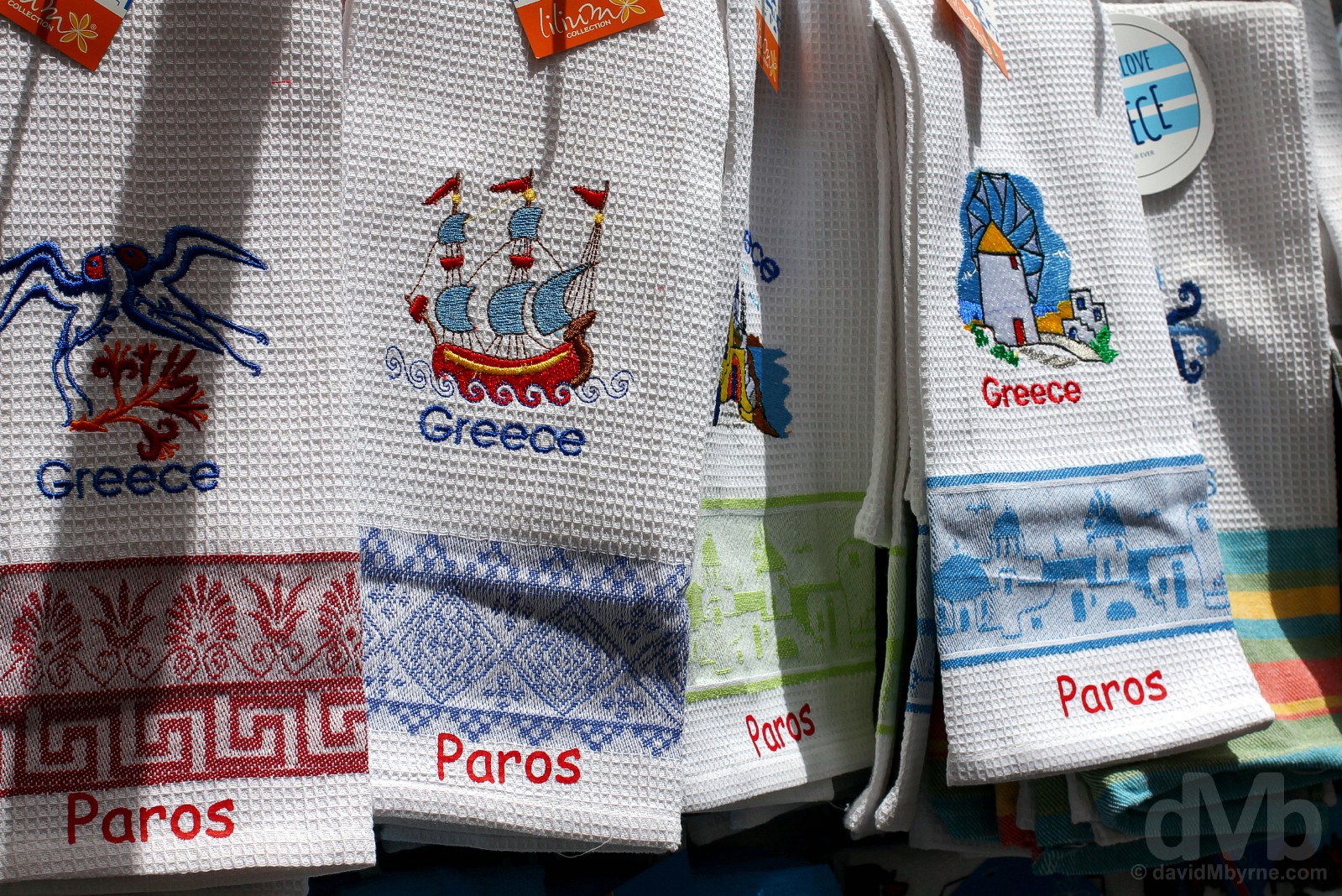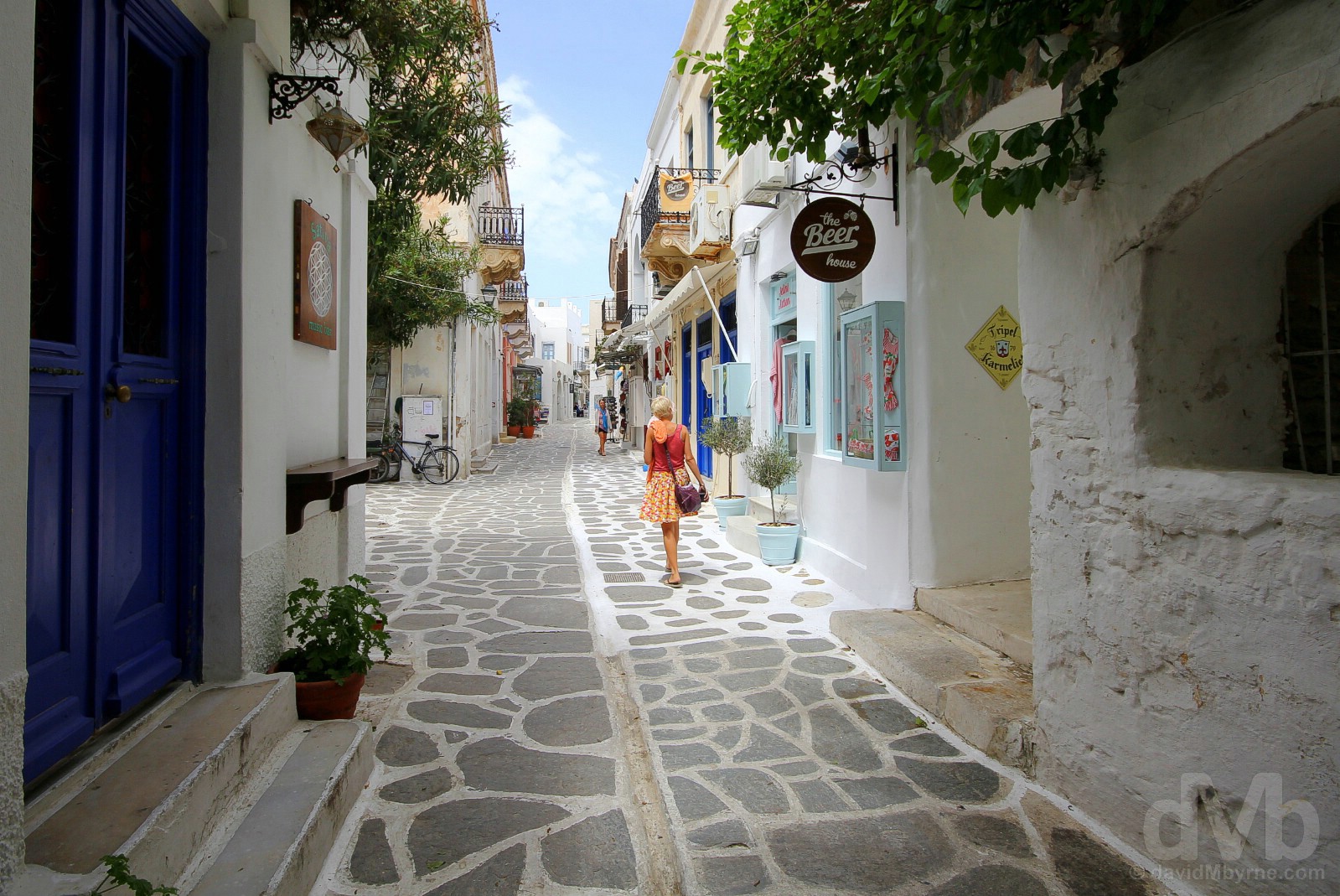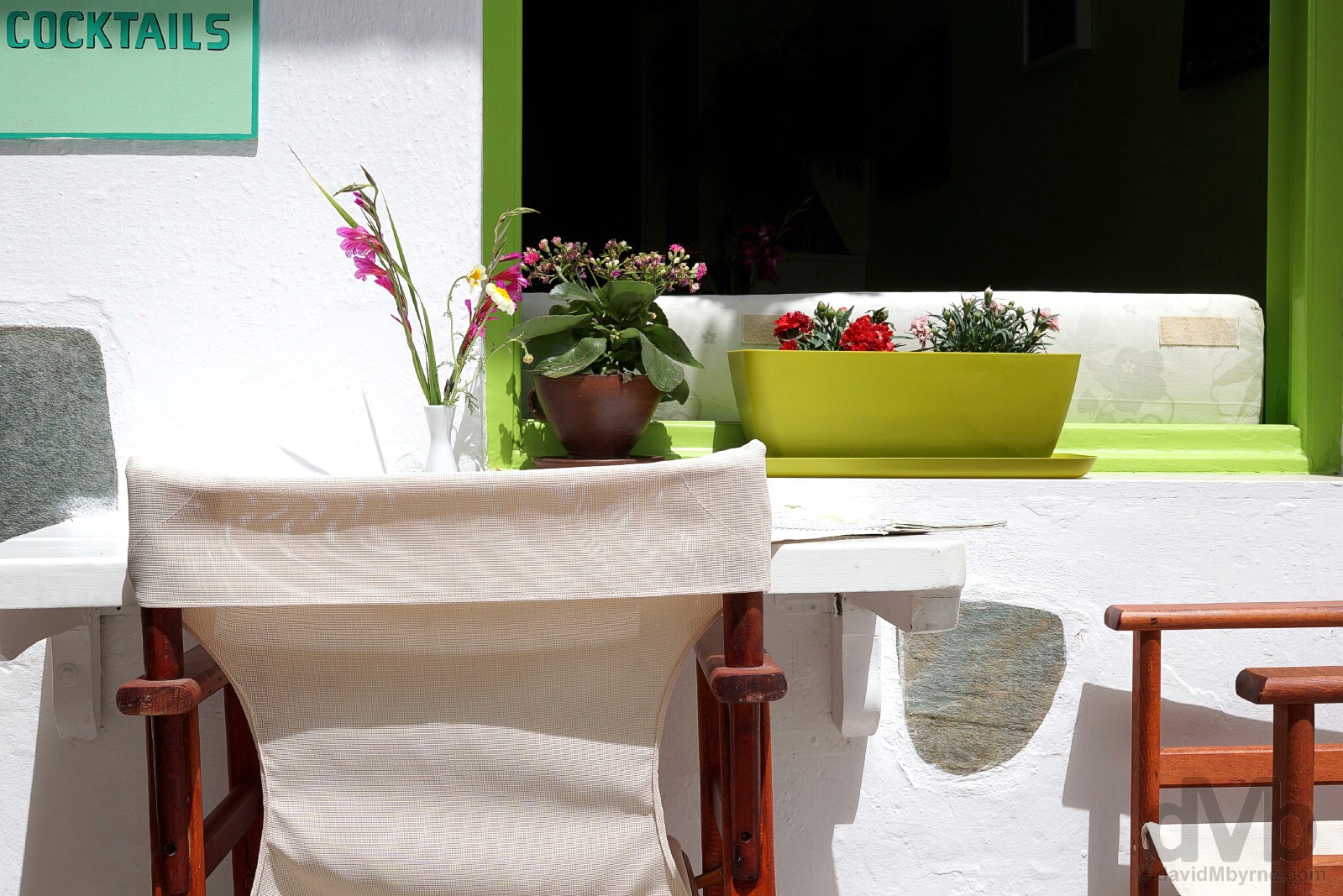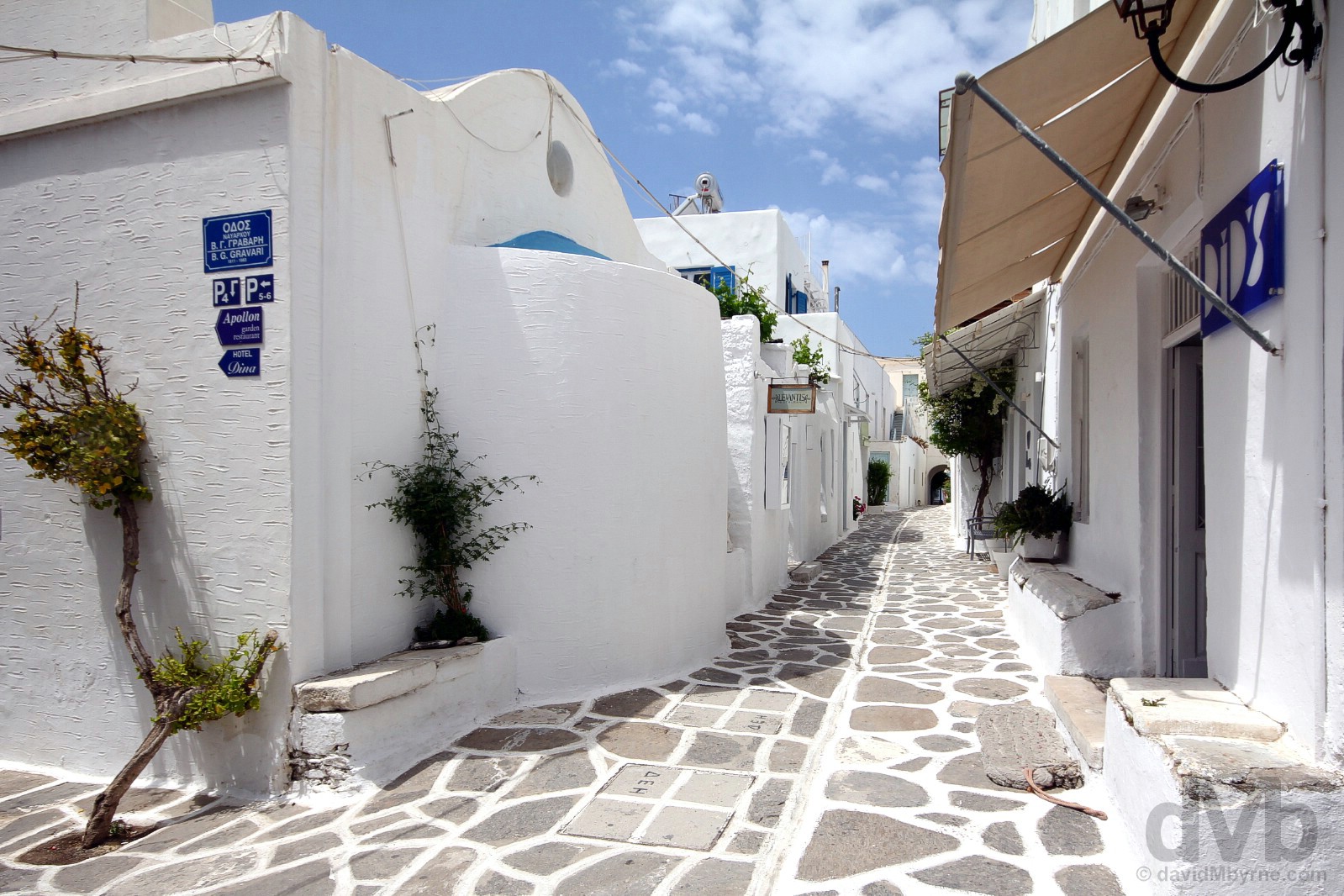Páros, Greece
”Páros… was all the more charming for what it wasn’t – it wasn’t busy, it wasn’t expensive, and it wasn’t as ostentatious as elsewhere. But it was still sufficiently Cyclades-esque swank and downright seductive, almost coquettishly so. And pretty. Oh-so pretty.”
Image || In the whitewashed lanes of Parikiá, Páros. May 1, 2017.
Páros, Cyclades, Greece
Time to slow it down a notch. Páros, the second island I got to savour as part of a 6-isle Greek island hop, was all the more charming for what it wasn’t – it wasn’t busy, it wasn’t expensive, and it wasn’t as ostentatious as elsewhere. But it was still sufficiently Cyclades-esque swank and downright seductive, almost coquettishly so. And pretty. Oh-so pretty. Two islands in and one was quickly discovering that ‘oh-so pretty’ is par of the course on these Cyclades isles.
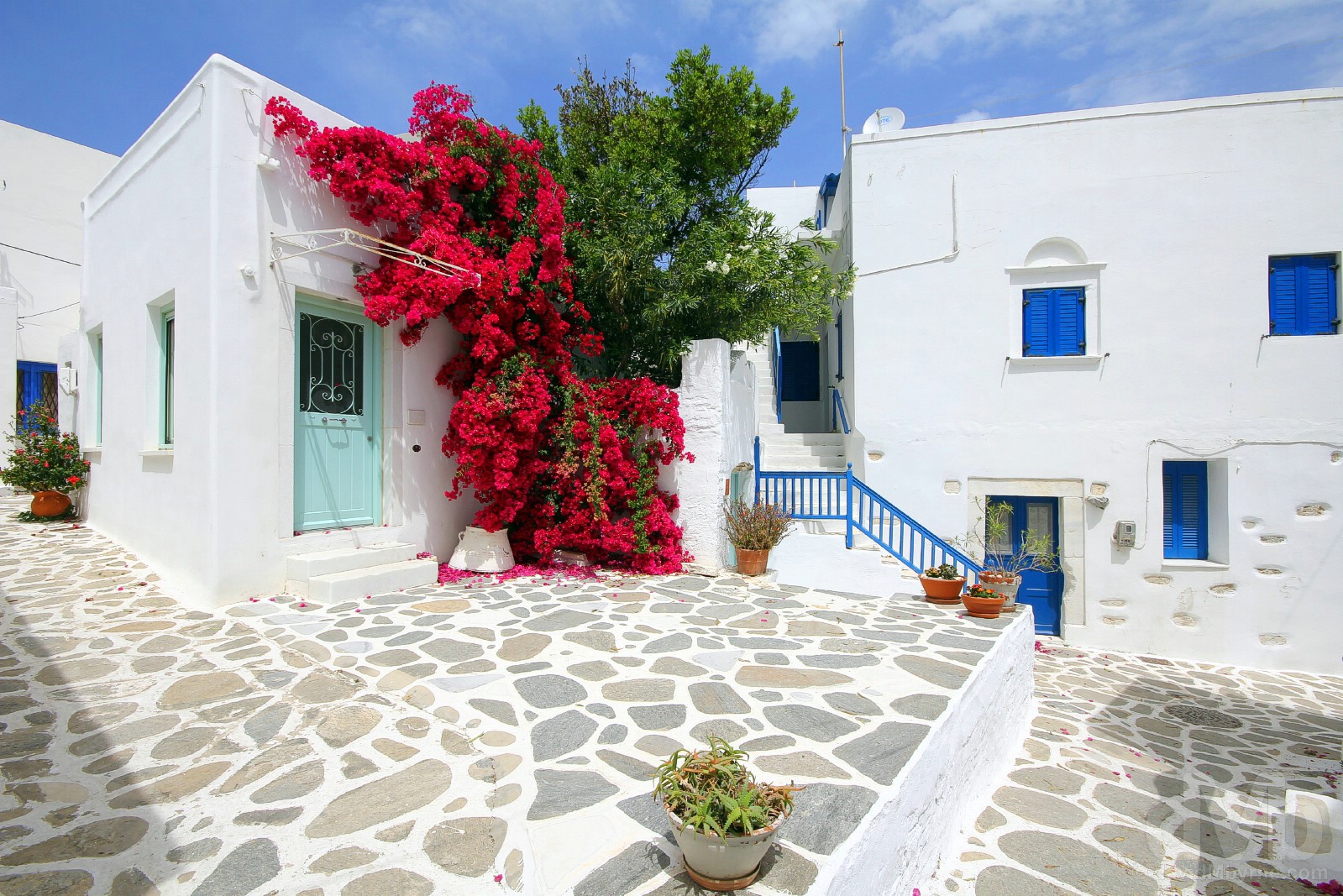
Whitewashed ‘sugar’ house cubist architecture adorned with characteristic blue, complementing pastels, and brilliant bougainvillea reveal themselves around many a corner in a twisting narrow maze of laneways paved with whitewash-outlined flagstones. Prototypical Cyclades and oh-so pretty. Parikiá, the bayside capital of Páros, Cyclades, Greece. May 1, 2017.
Of course, it’s all relative. While Páros wouldn’t be top of the Premier League table of Cyclades island escapes (mid-table, maybe), it’s still popular, especially in July and August (when I’d be sure to steer well clear). But having travelled here (by boat, of course) on the last day of April from league-topping Santoríni, Páros felt positively asleep. The change of pace, the drop in fellow tourist numbers, and the reduction in prices helped get over the Santoríni hangover.

Missing Santoríni, but not its prices. €5 for a half-litre carafe of wine with dinner. Yes please. That’s more like it. Taverna Kali Orexi, Parikiá, Páros, Cyclades, Greece. April 30, 2017.
dMb Country Overview - Greece
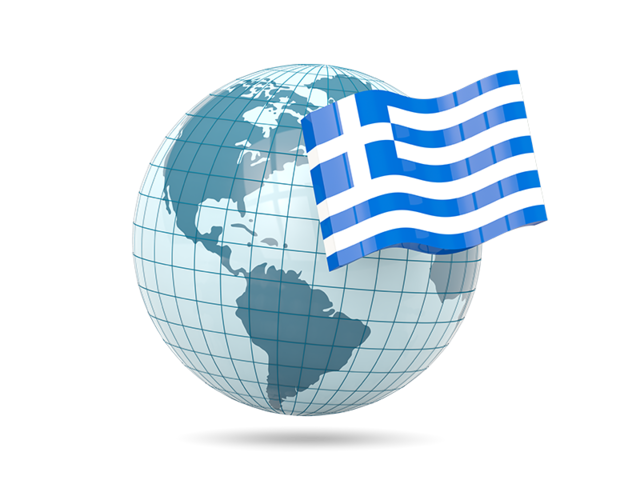 Greece
Greece
Region – Southeastern Europe/The Balkans (dMb tag: The Balkans). Capital – Athens. Population – 10.8 million. Official Language – Greek. Currency – Euro (€) GDP (nominal) per capita – US$21,000 Political System – Unitary parliamentary republic. EU Member? – Yes (10th member joined January 1981). UN Member? – Yes (founding member joined October 1945). G20 Member? – No. Size – 132,000 km² (Europe’s 15th largest country is approximately half the size of Ecuador, twice the size of Sri Lanka, and roughly the same size as the US southern states of Alabama and Louisiana. Topography – A mountainous interior (80% of Greece is mountainous), a long and convoluted coastline, and hundreds of offshore islands. Independence – 1830 from the Ottoman Empire following 1821 to 1830 Greek War of Independence. Brief History – From the eighth century B.C., the Greeks were organised into various independent city-states, known as poleis (singular polis), which spanned the entire Mediterranean region and the Black Sea. Philip of Macedon united most of the Greek mainland in the fourth century BC, with his son Alexander the Great rapidly conquering much of the ancient world, from the eastern Mediterranean to India. Greece was annexed by Rome in the second century B.C., becoming an integral part of the Roman Empire and its successor, the Byzantine Empire, which adopted the Greek language and culture. The Greek Orthodox Church, which emerged in the first century A.D., helped shape modern Greek identity and transmitted Greek traditions to the wider Orthodox World. After falling under Ottoman dominion in the mid-15th century, Greece emerged as a modern nation state in 1830 following a war of independence. UNESCO World Heritage sites – 18. Tourism Catchphrase/Slogan – All Time Classic. Famous For – Endless coastline and beaches; shipping; democracy (born here); a classical and hallowed past; ouzo; sun-drenched islands; Alexander the Great; the Olympics; being the cradle of Western civilisation; food (tzatziki, feta, souvlaki, moussakas, yogurt, grapes, olives and olive oil); economic collapse & austerity.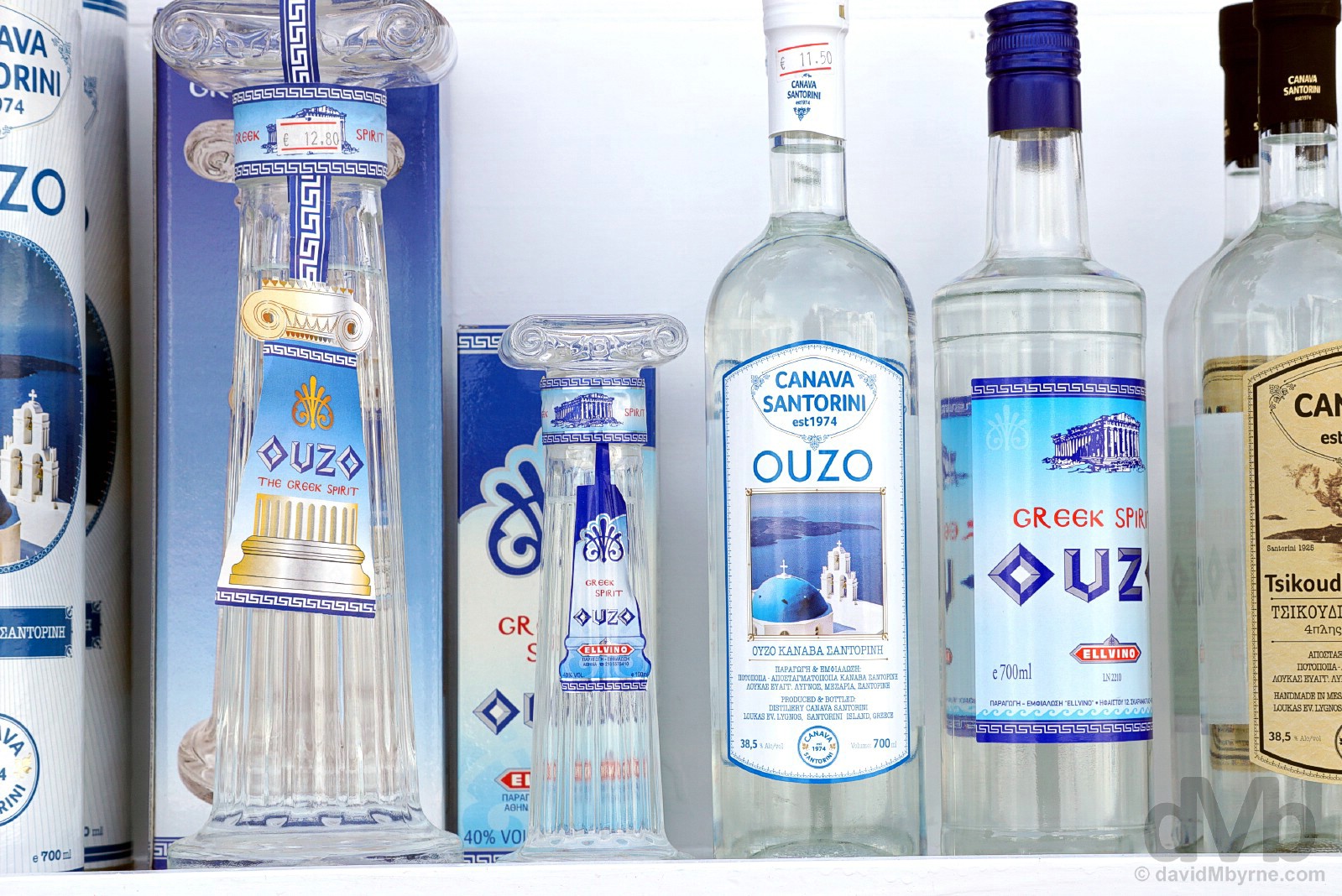
Ouzo for sale in the village of Oia, Santoríni, Cyclades, Greece.

Ouzo for sale in the village of Oia, Santoríni, Cyclades, Greece.
Highlights – Cyclades island-hopping and the remnants of all that ancient history (Greece boasts four millennia of sun-bleached ruins, artefacts and architecture). Greece Titbits – At nearly 14,000 km (8,500 miles), Greece has the 11th longest coastline in the world; Greece is considered the cradle of Western civilisation, being the birthplace of democracy, Western philosophy, Western literature, historiography, political science, major scientific and mathematical principles, Western drama and the Olympic Games (the country’s rich historical legacy is reflected in part by its 18 UNESCO World Heritage Sites, as of 2017); the Greek economy is the largest in the region with an economy larger than all other Balkan countries combined, this despite its well-documented economic battering and subsequent austerity measures.
Visits – 2 (May 2008 and April/May 2017). Where I Went/What I Saw – Thessaloniki; The Cyclades (Santoríni, Paros, Mykonos, Delos, Tinos); Zakynthos/Zante; Olympia; Sparta; Mystras; Athens.
Parikiá, the small bayside capital and main port of 200 km² Páros, is another one of those Cyclades isles settlements that’ll have you swooning over its idyllicay, its adorable presentation. Adding doggie parking to the mix does little to hurt Parikiá’s cause. Just when you thought you’d seen it all.
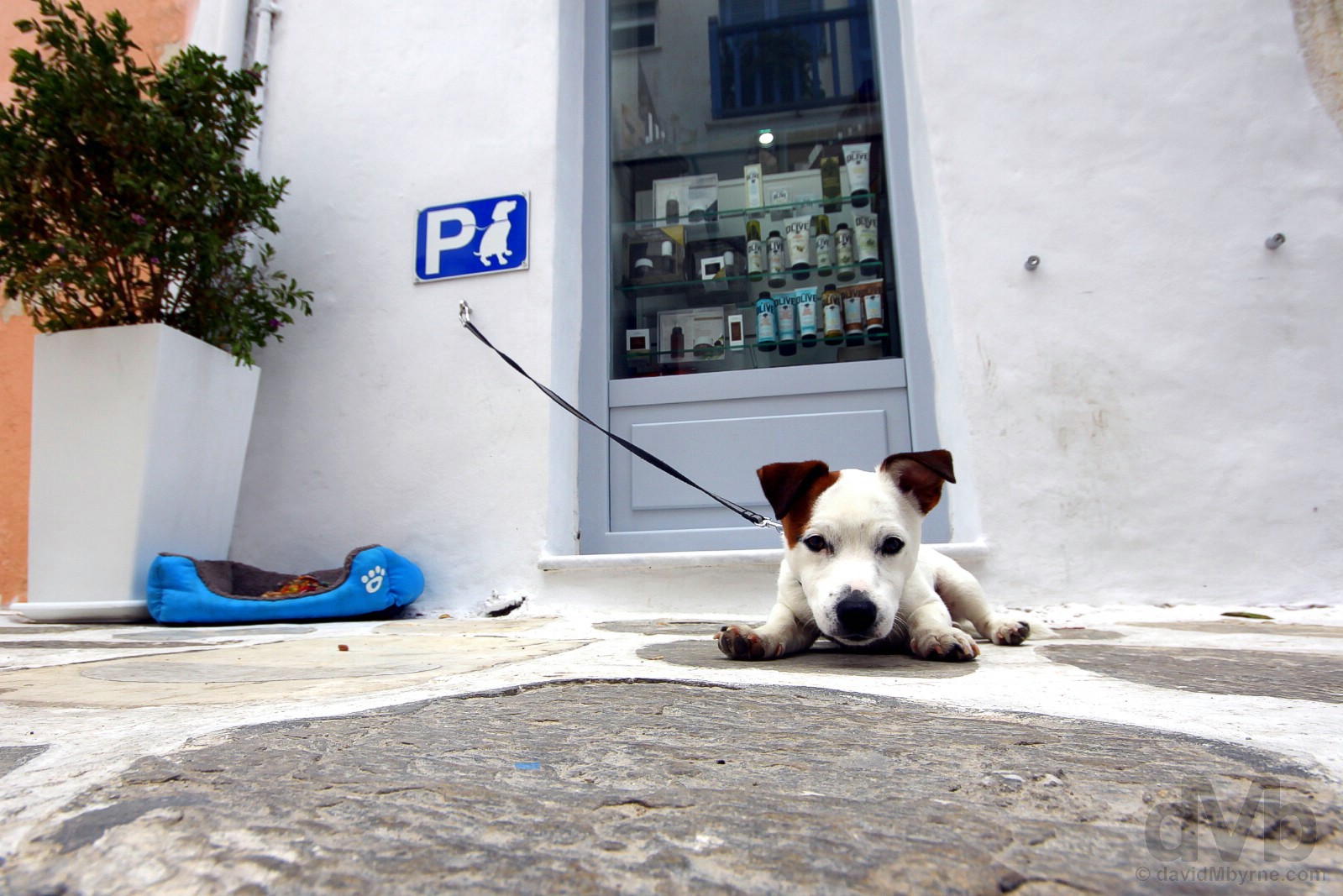
Parikia adorable. Doggie parking in the whitewashed lanes of Parikiá, Páros, Cyclades, Greece. May 1, 2017.
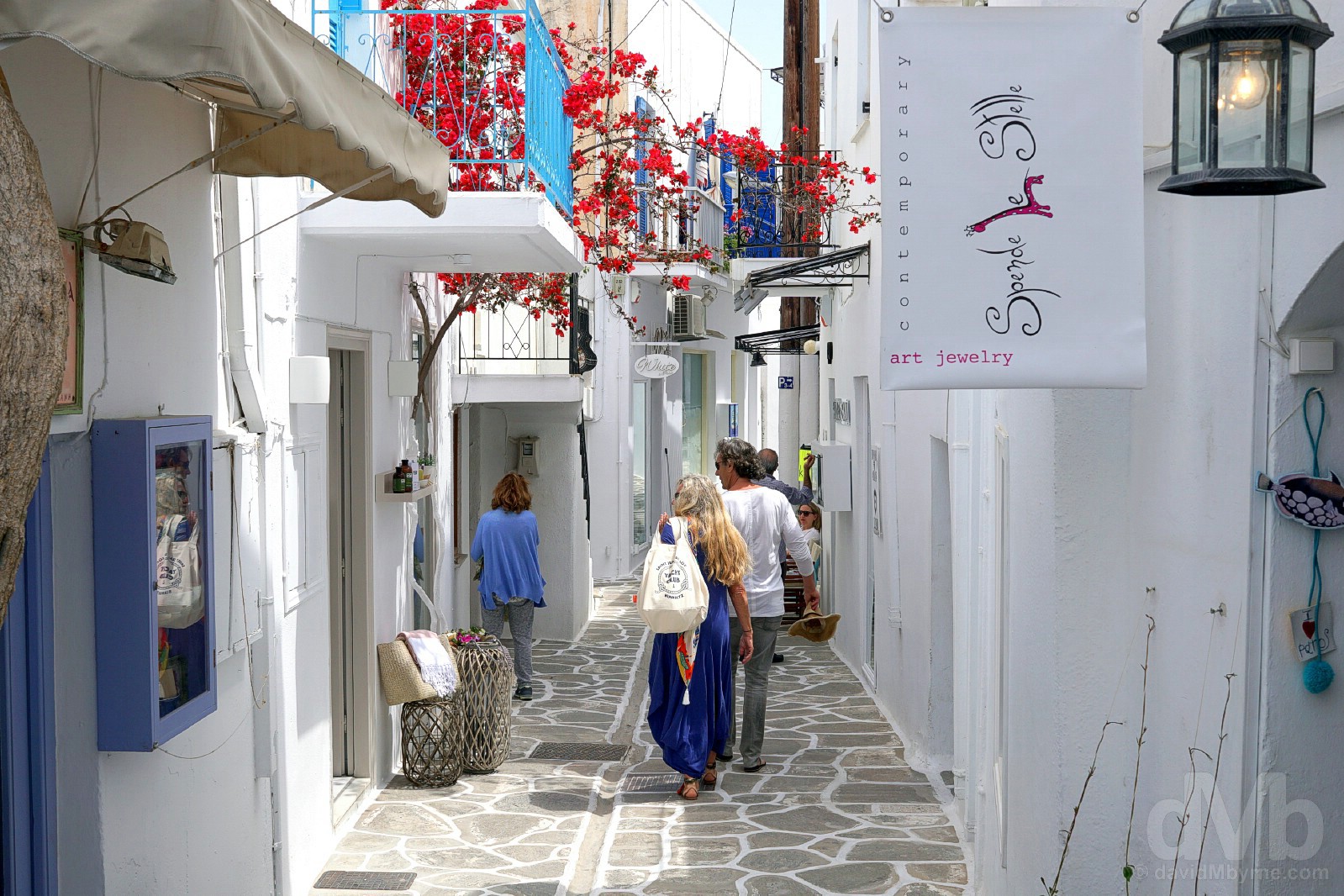
Tasteful colour. In the lanes of Parikiá, Páros, Cyclades, Greece. May 1, 2017.

Boutique shadows and chic. Parikiá, Páros, Cyclades, Greece. May 1, 2017.
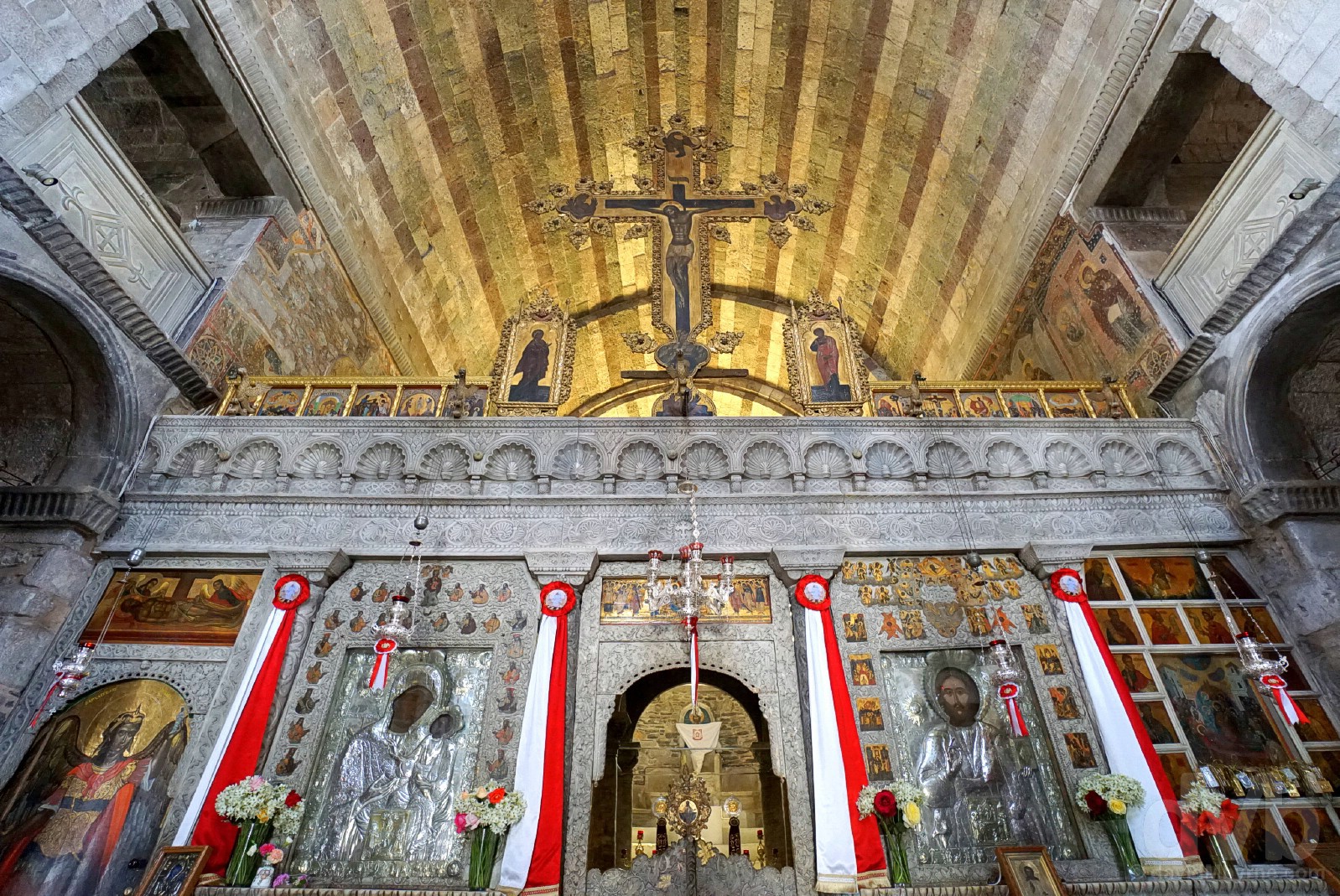
PANAGIA EKATONTAPILIANI | A portion of the interior of the Agios Nikolaos Church in the historic Byzantine church complex Panagia Ekatontapiliani, Old Town Parikiá, Páros, Cyclades, Greece. May 1, 2017.
Ducking into the icon-heavy Agios Nikolaos Church, the main chapel of the landmark Byzantine Panagia Ekatontapiliani complex (parts of which date to 326 AD meaning it likely predates the adoption of Christianity as the state religion of the Roman Empire in 391 AD), offered up a brief respite from the blinding white of the surrounding lanes. A revered location, this complex, with three chruches total, is second only in importance as a regional religious pilgrimage site to the famed Church of Virgin Mary/Panagia Evangelistria and its miracle-working icon on overtly-religious Tínos Island, my last stop in the Cyclades.
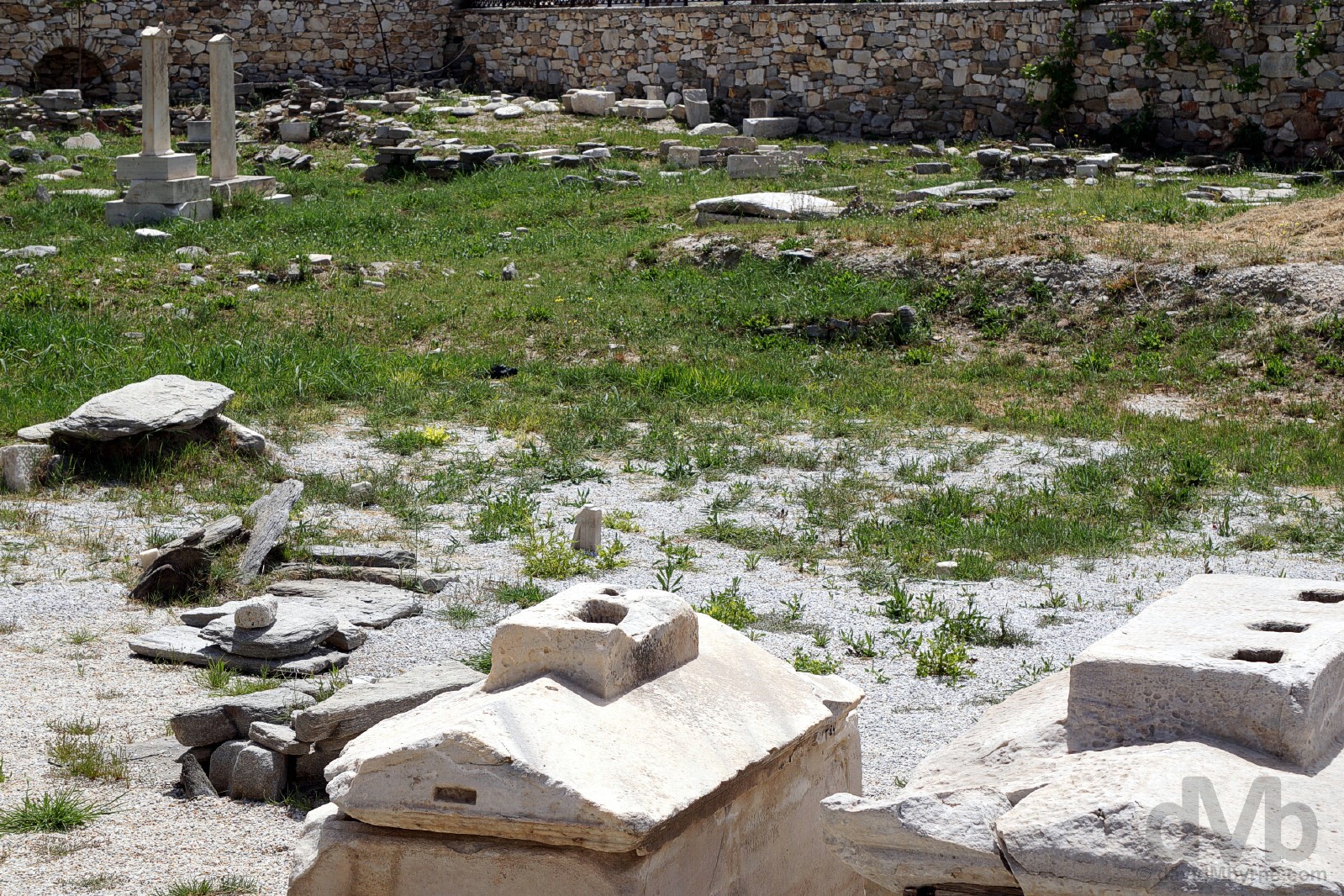
ANCIENT CEMETERY | The Ancient Cemetery, Parikiá, Páros, Cyclades, Greece. May 1, 2017.
While succumbing to the wowing whites, seductive shadows and pastel prettiness of a Cyclades lane, it’s easy to lose sight of just how ancient these lands really are. Like all the Cyclades isles, Páros is old. Antediluvian old. It has history, and a claim to fame. It was renowned through Ancient Greece for its white marble, hewn from the island’s interior and from which it prospered off as far back as the Early Cycladic period (c. 3000 BC) – the island’s most famous export was subsequently used to sculpt the Venus de Milo, one of the most famous works of Ancient Greek sculpture, sometime around 100 BC, and it was also deemed good enough for Napoleon’s tomb (died 1821). But ancient still has a very visible presence in present-day Parikiá. The town’s 8th century BC Ancient Cemetery, officially The Cemetery of The Ancient City of Páros, is located just opposite the Parikiá waterfront. In use until c. 300 AD, excavations since 1983 (it’s an ongoing archaeological site) have discovered Roman graves, burial pots and sarcophagi, most of which are now open to the elements in what looks like a somewhat unsightly and haphazard collection of neglected ancient burial detritus. That said, the panel fronting the fencing surrounding the site, and which keeps the likes of me out, still claims it to be ‘one of the greatest and best-preserved ancient cemeteries in the Cyclades.’

CYCLADES WINDMILLS | The roundabout Windmill of Parikiá Port, Páros, Cyclades, Greece. May 1, 2017.
The first and last Páros landmark that arriving and departing visitors see on this portion of a Cyclades island hop is the Windmill in the middle of a busy traffic roundabout at the entrance to the Port of Parikiá, an important Cyclades ferry hub. Capped with wood and straw and harking back to the days when almost every village had its own windmill to grind grain or mill flour, advances in technology has made them redundant today. The efforts of some Cycladic settlements – notably Mykonos, Ios and Páros – to restore their windmills as both a memento of the past and as a landmark for today means that they are now an icon of the Cyclades an a par with white cubist architecture, blue-domed churches, and wriggling whitewashed village lanes.
Signing Off | The Complete Páros Gallery

